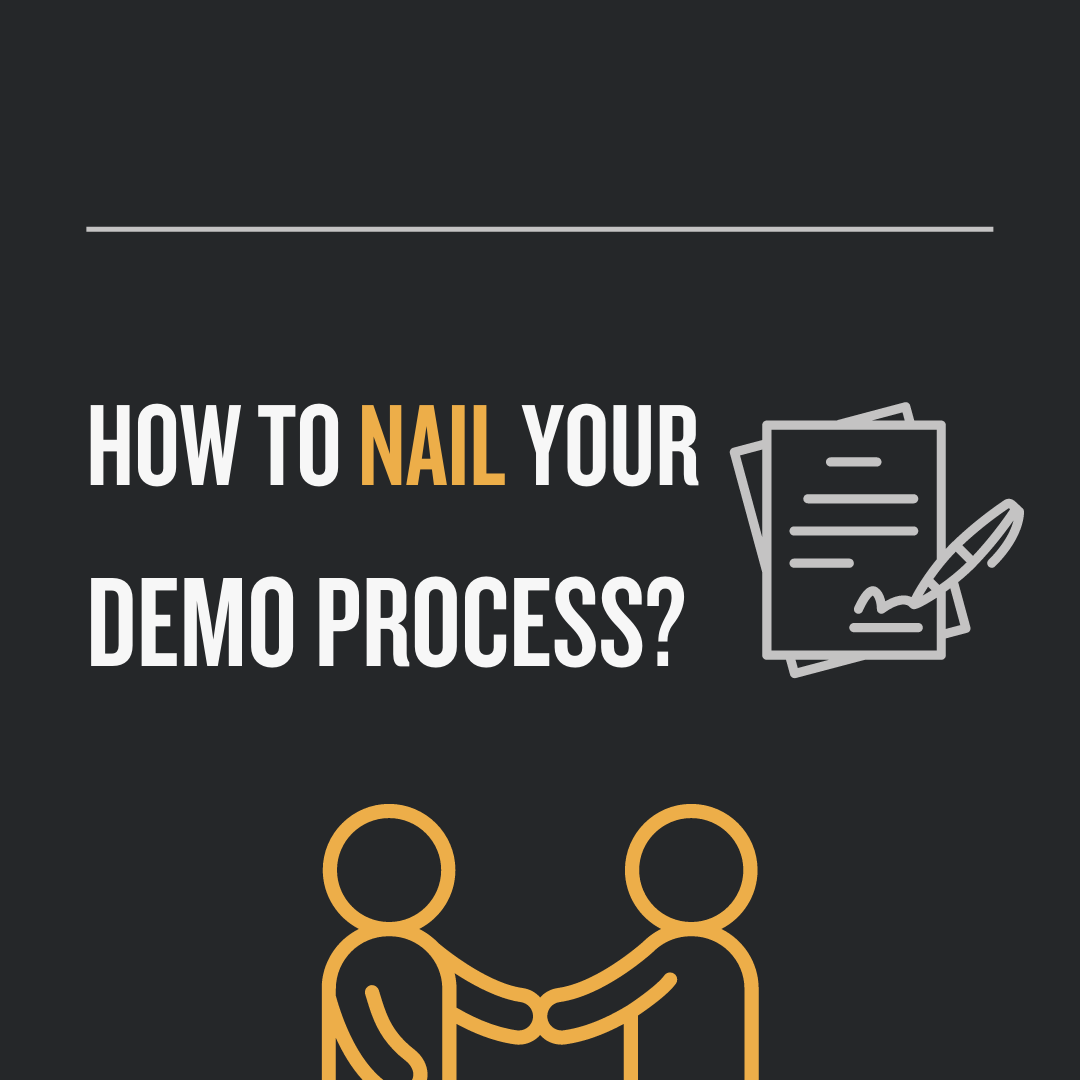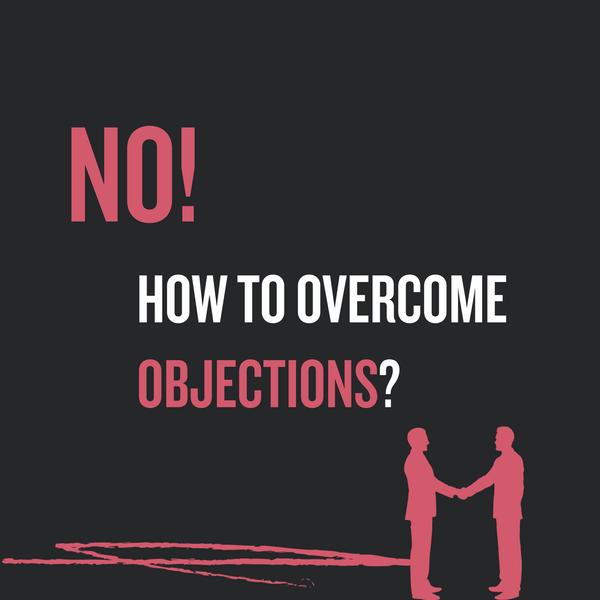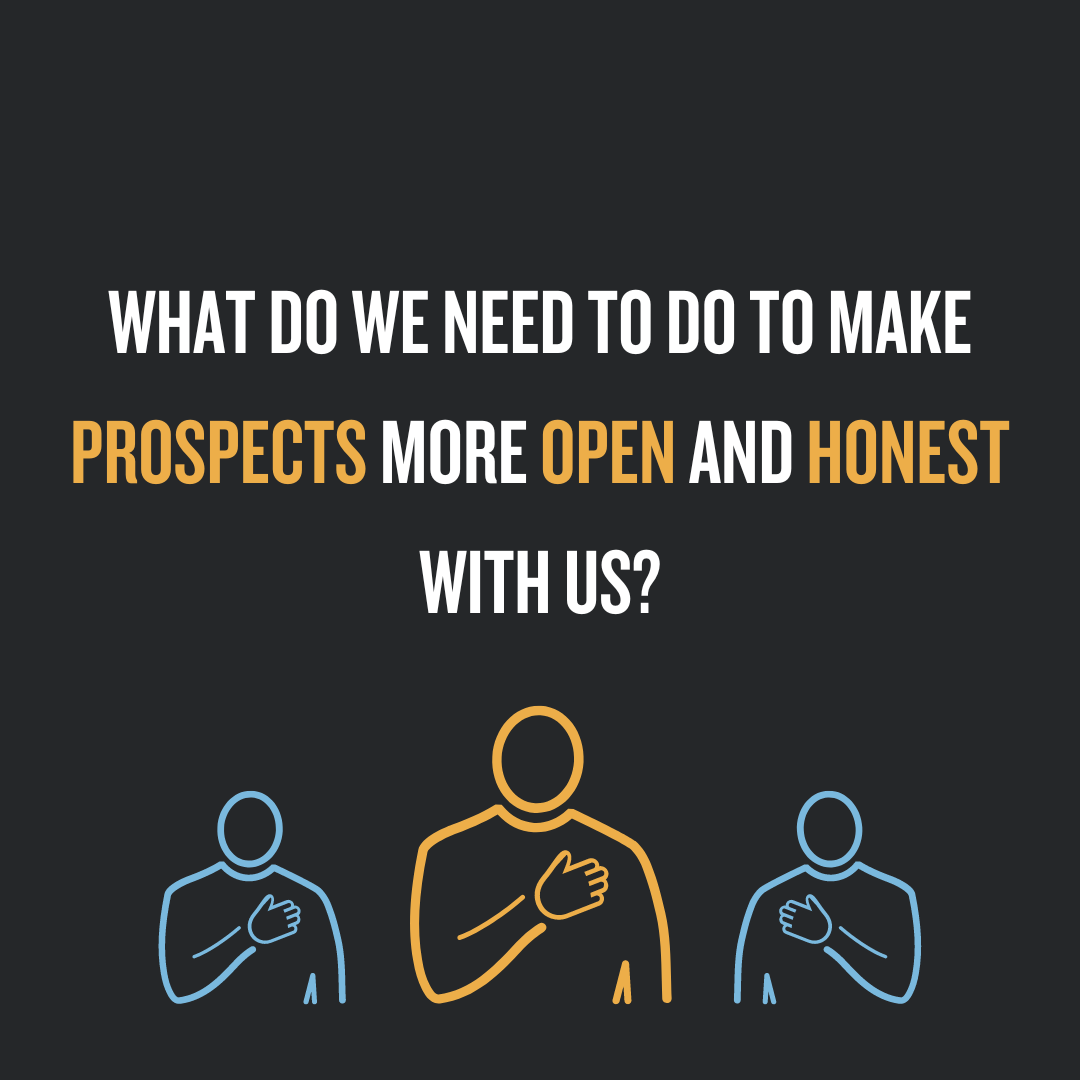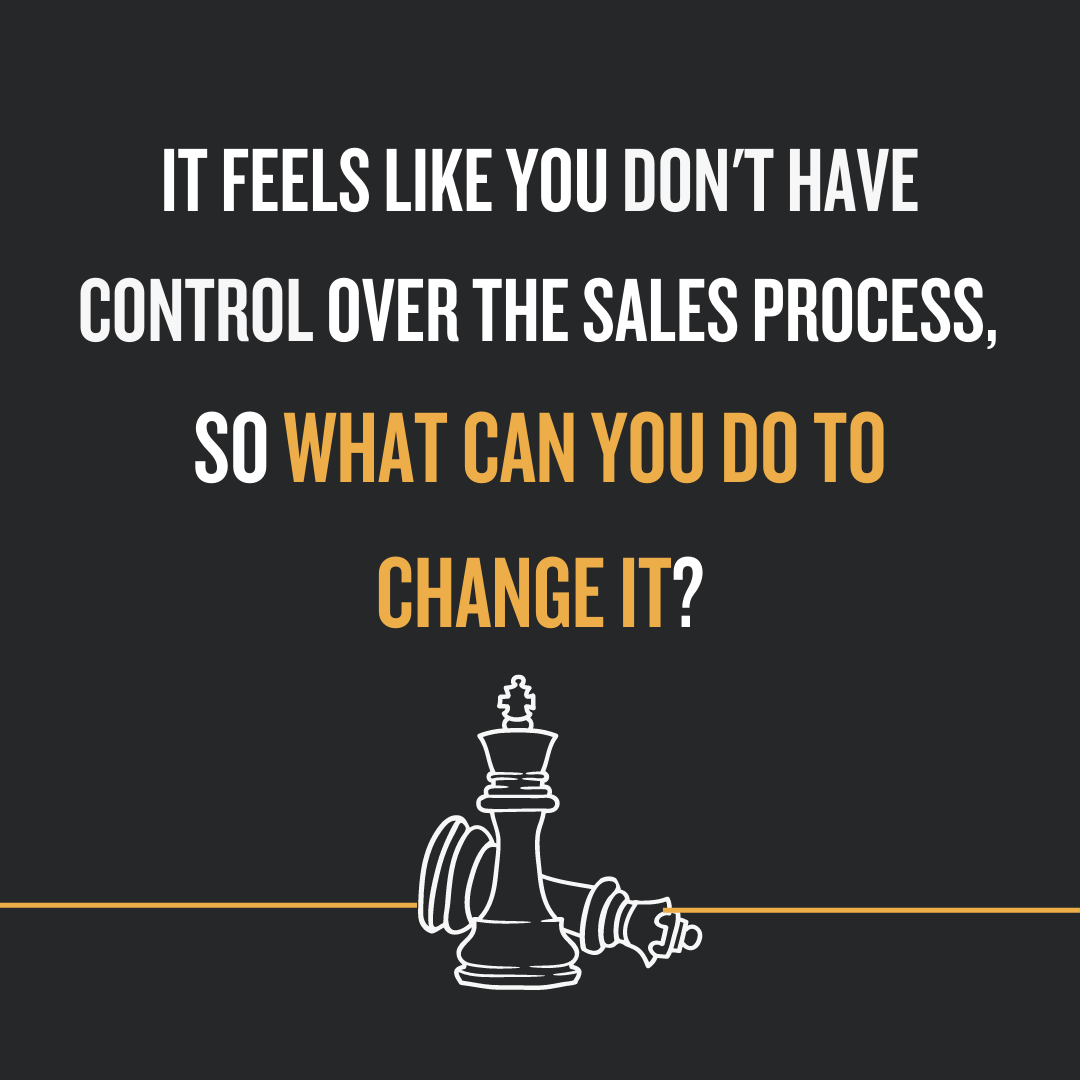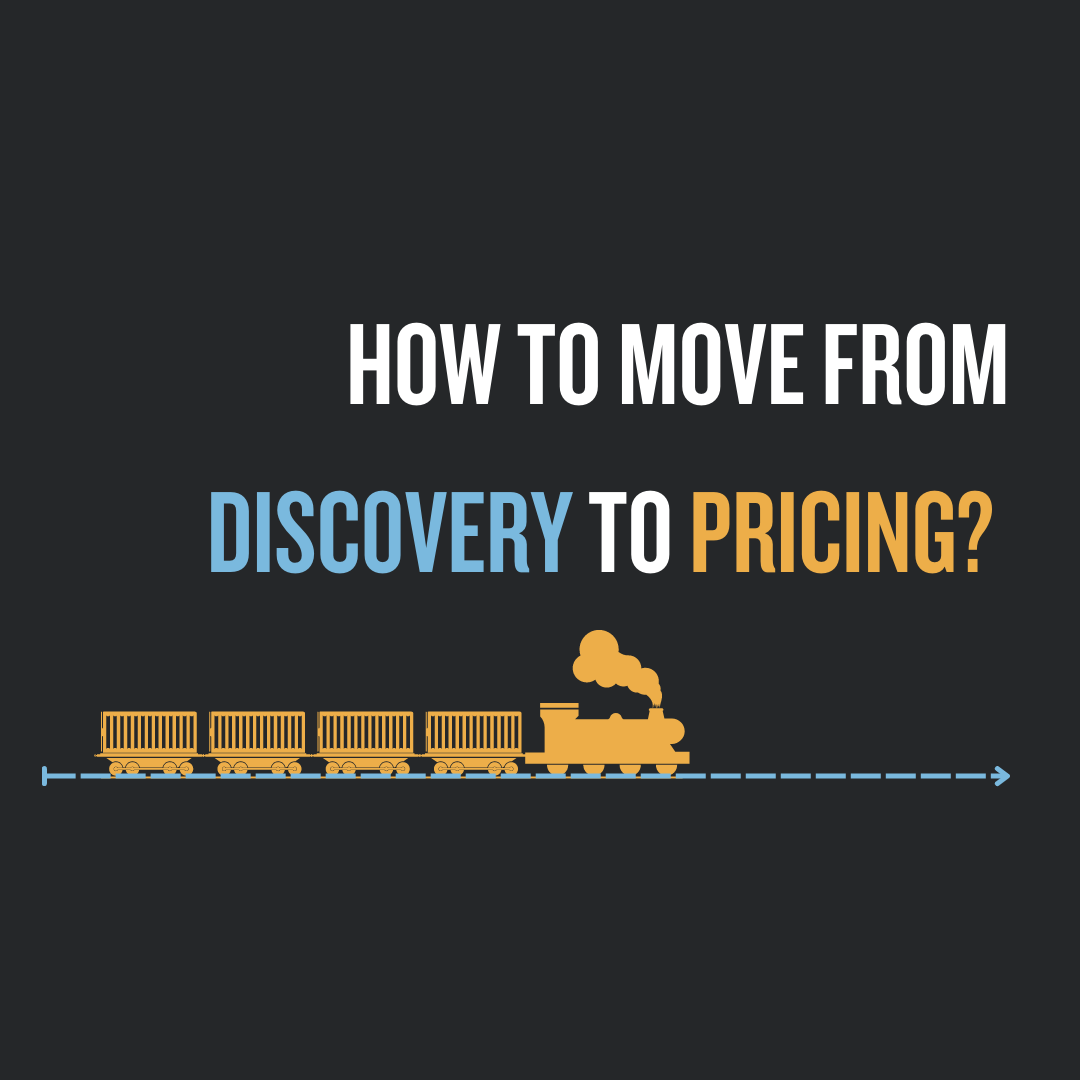Once I said that demo calls just remind me of a field full of traps and your job is to walk this field professionally and with a confidence of a rock star.
Yes, demos are tricky but for every hidden trap, there is advice on how to handle certain situations. So, in this article, I’ll talk about the best tips and practices to handle your demo process like a pro.
Worksheets are available to download later below.
Don't forget about check-ins
One of the biggest mistakes sales reps make in demos is they look at it, like, it's just simply a demo. Like, you know, if you wind up one of those wooden dolls and they just talk.
The Zoom meeting starts, and they share their screen and they say, “Welcome to our demo,” and they dive in. No discovery, no introductions, no agenda, and they make it about themselves and their product, their solution.
When you're thinking about demos, try and actually eliminate the term "demo" from your vocabulary.
And think of them really like conversations where each party shares their screen with one another so they can see what's going on in real-time while also getting some background information on who is viewing or listening to this presentation.
If you think of it that way, then you're much more likely to have a discussion that resonates with the prospect or even actually have a discussion.
Do a "meaningful check-in"
Make sure you check in with customers regularly, every minute and a half to two minutes. When you do, ask if they have any questions on that? or am I making sense?
Nine out of ten times, the customer will say they don't have any questions or say "Yeah, make sense". But this doesn't actually help spur a meaningful dialogue.
Use an open-ended question during check-in
A check-in can be meaningful if it is done in a certain way.
For example, you could say, "Based on what you saw, and this feature here, I'd love to get your thoughts on how you would see that deployed within your organization." This is an open-ended question.
Or, “You mentioned that you saw a demo from competitor ABC this morning, love to get a sense as to how this compares to that.” Or, “Now that you've seen this aspect, how does that compare to the solution you have in place?” or “Love to get a sense as to how you would see this received by the sales organization or whatever stakeholder groups using it.”
When you ask open-ended questions, it usually gets the prospect to tell you how they feel about what you just showed them. They might compare it to their current solution or the one they are looking at.
Sometimes, you can also ask questions about your competition. If you know that the prospect is using a competitor's product today and that your product is better based on what you've heard from your customers, then this is a good opportunity to mention that or to ask the question yourself.
You're not just getting confirmation from the prospect verbally. They are telling you that they want your product or service.
You know what their needs may be based on things like competitors and features, but this gets them talking in an affirmative way about how great something could potentially work once it's implemented. This is why this works so well as a sales strategy!

Get your prospect talking in the affirmative
Humans are a bundle of both logic and emotion. So if you get them nodding their head and talking about how they like, what you're showing them, it just makes your demo that much more powerful!

Understand if your prospect is leaning in or leaning out
As you're going through the demo, you want to make a mental list or actually put a note down of X or a checkmark.
So an X would be when you do a meaningful check-in and ask their thoughts, they're like, “Ah, yeah, we don't really like that, here's why. Let's say you're not able to overcome that objection, you put an X either in your mind or on a little piece of paper without them seeing.
If it's a checkmark, it suggests the prospect is leaning in. This is something that they like, that they think would be an improvement on what they have today or an improvement on the other solutions they've seen.
The point is that at the conclusion of the conversation, many reps ask "Are you leaning in?” or “Does this sound like something you'd be interested in?" Both of those are excellent questions, and I suggest you ask them.
But the difficulty is that many sales representatives do not know what the answer is likely to be.
However, when you do meaningful check-ins, you should have a bunch of Xs and a bunch of checkmarks. So at the end of the discussion, you'll have a much better sense than if you simply say, "Love to get your thoughts on whether you're leaning in or not," or similar things.
You should be able to tell if the prospect is leaning in or out, as well as where exactly they're leaning in and leaning out.

Leg up your competitors in a very subtle way
Another reason these check-ins are important is, just remember when you yourself were on the receiving end of a demo. And they asked at the end, what do you think? Did you remember every single thing you liked and didn't like?
Similarly here you're not asking people to rely on their memory for 20 minutes, a half hour, or 45 minutes. Because they're not going to regurgitate all the things they liked and didn't like. Prospects shouldn't even have to do that.
So, if you want to be better than your competitor, use check-ins as often as possible. Here I advise using a good mix of open and closed questions. Also, ask softball questions when you can because you know the competitor's solutions well and you know the questions to ask where you're going to shine.
When you're close to the end of the demo and ask the customer their thoughts on what they just saw. It is a great feeling to pretty much know where their head is at.
Engage every single person in your process
Often we see sales reps navigate through a sales discussion with multiple people on the prospect side, and they only talk to one of them the whole time. Or they'll just talk to the person on the prospect side who happens to talk the most.
What about the poor introverts on the call, who have some really good things to say, but they're not getting any airtime, because someone on their team has kind of boxed them out a little bit. And we're not actually creating space for them.
Later, they might just become one of the stakeholders that need more time to get convinced, lengthening your sales cycle.

So, let me remind you, as a sales rep, you own the process. You need to make sure that the environment is positive for everyone involved and you can do this by engaging each person on the call.
But how do you do that?
First, use the introduction phase, make sure people go around, and do their own introductions.
But when you're going through the call, let's say there are five people on the call, and John just keeps talking. You know Jennifer hasn't had an opportunity to say a thing.
That's your turn to say:
“You know, Jennifer, love to get your thoughts on this and your perspective on this particular feature. And Simon, you know, what are your thoughts on this and etc, etc,”
And then give them some airtime calling by their name.
And there are a few reasons why you need to include everyone in the call:
- It’s polite and respectful
- I've seen more than once, people leave the call where the senior person on the call is the only person that the sales rep was really speaking to.
It actually happens a lot, when the sales rep targets their attention only on a senior decision-maker and forges about the other altogether.
And when they're having the post-demo internal discussion, a person excluded from the conversation might tank the deal and can say something like:
“Oh actually I have had exposure to this solution in the past and it was a bad experience.” And this way they stop the deal and ignore the rep.
They end up ghosting the sales rep and the deal never goes through.
So the best thing you can do is to give everyone on your call just as much airtime and space, even if they don't speak up. It's important that their thoughts are heard so make sure there isn’t any gatekeeping going down when it comes time for them to talk!

Don't over-PowerPoint your prospect
Does anyone actually love watching PowerPoint presentations? Probably not many of us.

Consider the last time you went to a car lot, and there was a lovely, gleaming vehicle that you were interested in purchasing. You go to see the car, right?
What if the car salesperson says, "Hey, come on into the office first so I may show you something." And when you follow them inside, they present a PowerPoint presentation in their conference room about the automobile out on display that you just walk past. You'd be like, well, show me the car then. Right? It's no different here.
If you have a good solution that you can show people, do it! If people are interested in what you're selling, they'll want to see how it works.
Maybe you do need to understand a need, maybe you have the traditional logo slide. But outside of that, try and just get right into the demo.
But if your product or solution isn't very easy to demo, don't worry. Then your presentation is really about engaging your prospect.

Use videos, and pictures and turn your PowerPoint into a tool for conversation, not a boring presentation.
But the key point here still is: Less PowerPoint, the more impactful your presentation is probably going to be, the more it's probably going to resonate with your prospect.

Prepare for screen sharing
You want to make sure that everything on the screen is meant only for your prospect. This includes anything they might see accidentally, like if you have other tabs open or pages in your browser window when someone walks by and looks into what's happening inside yours.
Make sure that you're tab-free and picture-perfect before taking your call.
A great way to ensure the best possible experience on our end is by going through all those pesky tabs, closing any unnecessary ones, and making everything look pristine in its picturesque glory!
Also, make sure the document you're sharing is big enough. It's usually 150% larger than what you need to ensure that the prospect can read it and then truly ask them, “Can you see those numbers clearly or that typeface well?” Checking on things like this is crucial.

Make sure that everything on the screen has a purpose. Don't look at anything else on the screen, like email or Slack, if it has confidential or personal information that you don't want the prospect to see. I can imagine, that your organization doesn't want the prospect to see that information either.
This way of screen sharing is professional and respectful for both you and your prospect. Sure, there can be situations when you NEED to dive into an email or a document, but in this case, you can stop sharing your screen altogether. There is nothing wrong with this approach. I talked more in-depth about screen sharing in one of my previous articles, so feel free to check it out here.

"Tie it up with a bow" strategy
A lot of people don't realize that when you're answering questions and objections, it's essential to check with your prospect.
“Did that answer your question? Or did that address your thought on that?”
These kinds of questions are helping you to make sure that before you're moving on and speeding along, for the rest of your discovery or demo, you're really taking the time to understand that what you said, actually addressed what the prospect wanted.
This checking process is called “tie it up with a bow” and is essential during any objection handling.
You should always try to figure out whether your client is leaning in or out as you go through the rest of this discussion.
If there's an objection that has been answered but still doesn't seem to actually overcome their objection, it might be a limitation or a drawback of your solution relative to the competitors, but at least you know that at that point, and you can actually address the objection accordingly.
Remember, once you've answered a question or addressed an objection, wrap it up in a bow. Check-in with the prospect and make sure that you address their question or concern.

Don't train the prospect
Sales agents often get so excited about the features and benefits of their product that they start acting like they are training the customer on how to use it.
But what you should be doing is trying to understand the customer's needs and then tying those needs to the unique value your product can offer. Once you have done that, you can walk them through that.
It's true when you are giving a demonstration, sometimes you need to focus on specific features, but before doing that, ask yourself if you are trying to sell or train.
Sometimes sales reps are actually aware that they crossed the line and started wondering, how to slim down the amount of time that they’re actually delivering a demo because they know that every minute counts.

You can improve your demo by recording it and looking at each 30-second segment. You need to ask yourself if you were training or selling in that section. If you were only training, then you might have gone too deep into the functionality.
Try this worksheet to make your process better:

Remember about the tone and cadence
I’ve talked numerous times about adjusting your tone and how it can influence your sale. And a lot of sales reps underestimate the power of their tone and don’t consider their voice as an ultimate tool.
So, let me explain how your tone can actually help your demo and sometimes even save it:
- Make sure that your tone is confident.
It can be tough when you are talking to someone on the phone, really senior and they ask you a question that you don't know how to answer.
Sometimes you get nervous and lose all your confidence. So here it's important to find a way to center yourself and bring yourself back to a confident place so you can answer their questions.
- Slow down your tone.
The best way to get back on track is by slowing down your tone. When people feel nervous, they often talk fast and breathe quicker - if this happens take a deep breath before continuing with the discussion so that you can stay cool during these tense moments!
The second thing you should remember though - Your processes are key; having them allows you some comfort in knowing what steps will be taken next in case something goes wrong. When you have a repeatable scalable process, then you can actually usually calm yourself down, get back to the level of being confident and go back to that next step in the process.
- Don't be overconfident, but be passionate in your own way
You should be engaging, but don’t forget to show your humility. Confidence in the solution you provide is important because it will help prospects trust what you say and listen more closely for information that might otherwise go over their head or bore them rigid after a while - which can happen if reps are too loud/boisterous.
It goes back to the exercise of how you want to make your prospect feel.
People communicate differently depending on their personalities. If someone is more outgoing, they might come across as more bubbly and vivacious. But if they are an introvert, they might have a quieter passion for what they are saying. It's all good!
- De-escalate not just by your words, but by your tone and cadence
Sometimes it's hard to find a common language with the prospect. And you get an opportunity to get into a bad cycle where the prospect gets angry or upset and starts attacking us.
the trap I see sales reps fall into is that they'll pick up on that tone, and they'll then convey that same tone. The prospect will then probably get angrier and it will just keep going downhill. It's like a vicious circle where you lose control of the conversation. When this happens, you need to stay calm and not respond in the same way.
If the customer is starting to get angry or upset, you can calm them down by taking a breath and speaking more slowly. More often than not, this will make them match your tone and you will regain control of the conversation.
Although mimicking your prospect is important, there is an exception to this rule. This is actually a rare case where you can break the norm.
So, once again, if you find yourself in a situation where your prospect has lost interest, don't worry. You can usually bring the conversation back on track by controlling the pace and tone of your voice. This will help show that you are in control of the situation and that you are still interested in what they have to say.

Remember about the customer lens.
Try to remember, how many times during the call you said these phrases:
- “I think this…”
- “We think this…”
- “We feel this…”
- “Oh, wait till I show you this part of the demo, I really like this.”
And I can bet you're using these phrases a lot, and all because it's natural to be invested in your product and utilize your own thoughts for the demo process.
But here is the thing, people often think that sales professionals are only interested in making money. They don't always think that you're acting in the best interests of the prospect. This can lead to a negative view of sales professionals.
So here is what you can do to adjust your wording to the customer lens. Listen closely to the difference in tone when you say:
"This next section is going to be really exciting because our customers have told us how much their business improved after using one of these features. They rely on it for success, so I want your feedback too!"
You see the nuance there, вuddenly, you're putting the spotlight on your prospect.
The salesperson used to be in charge of understanding their needs and desires; now it's all about what these people want!
A customer lens is a powerful tool for those who are looking to connect with their prospects on an authentic level. This means getting rid of “I” and focusing more on what your potential clients actually think, which will lead you to share fantastic customer success stories.

Share customer success stories
Most salespeople don't use customer stories when demoing the product, which can be a huge missed opportunity.
Customer history is essential for understanding how your potential clients think and feel about their problems or issues in order to craft a compelling demo that resonates with them - but, remember, it's not enough just telling one story!
If you're having half-hour conversations with a prospect, I recommend weaving in two or three customer stories. Stories that are very quick, sharp, poignant, relevant customer stories sound bites.
You can learn more about customer success stories in one of my previous articles here.
Always compare your solution
As you are going through your demo, make sure to ask how what they are seeing compares to their current solution. If the prospect has told you that they have already evaluated other solutions, be bold and ask them how it compares to those solutions.

You should naturally be asking, “How does this compare to what you've seen or what you've got today?” Because how else are you really going to understand how they're assessing things in their mind compared to what you're showing.
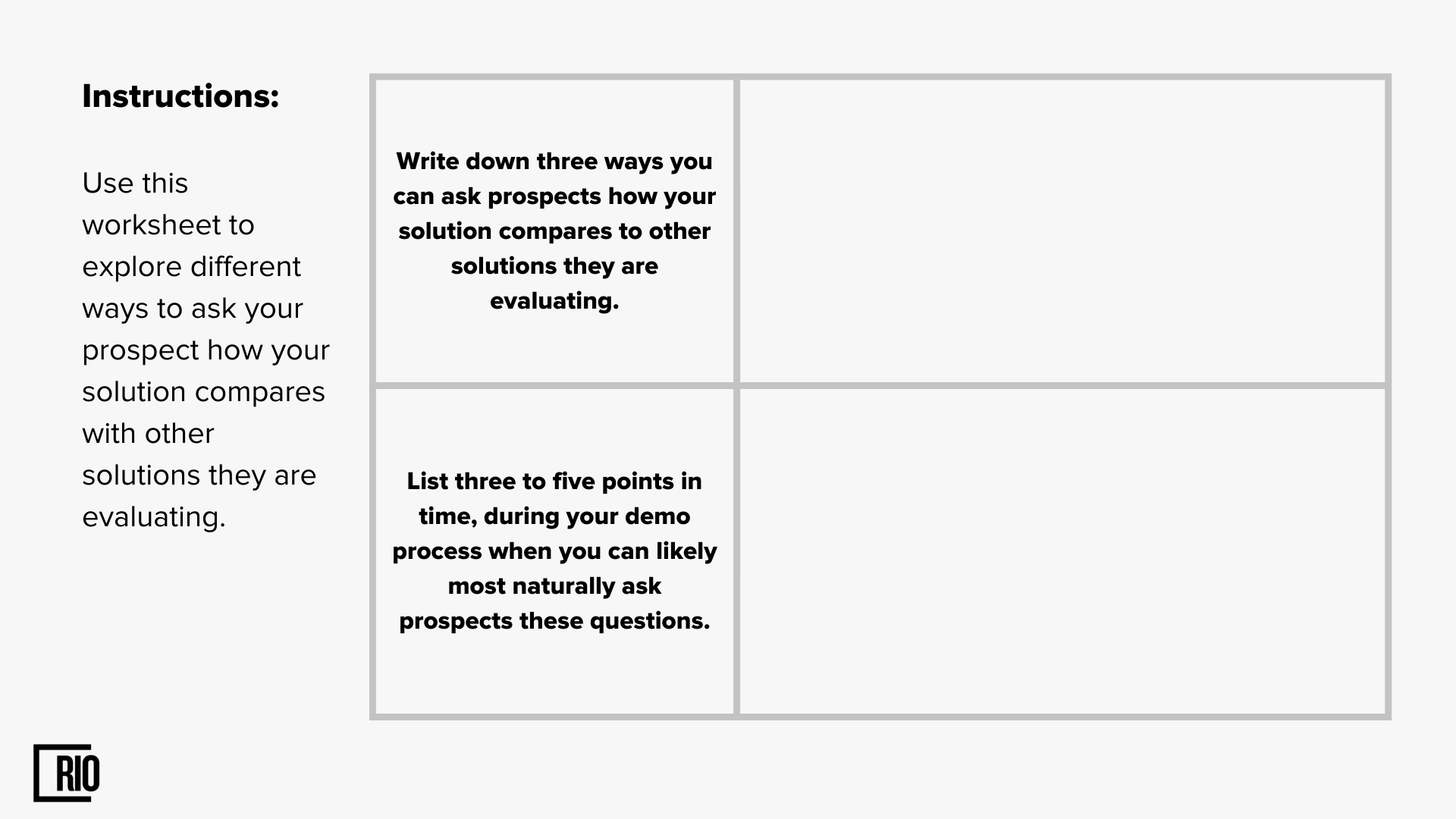
This is one really good way to check in after you show them an important aspect of your solution and ask how that compares to either the current solution or the ones that they're evaluating.
Become an expert
It's a game-changer when it's deployed correctly. Positioning yourself as the expert.
You always want to leave a sales conversation feeling like the prospect learned something new. In fact, you can actually aim to make your sales calls so impactful that the prospect in hindsight would have actually paid for the call.
And you may ask why and how the hell I can do that.
Knowledge is power, and unique knowledge is the desired product, that pretty much anyone wants to buy.
Now, I want to ask you a question. If you're selling to a marketing department, how many people are you talking to each week, month, or quarter?
If you're a typical salesperson and make average discovery calls and demonstrations, and if that buyer persona is your main buyer persona or at least the economic decision-maker, then you'll probably talk to let's say around 10-15 individuals each month.
And when you talk to those people, you're not just having a casual conversation. You're actually asking them about their business and their pain points and challenges.
It means you have a very valuable, unique perspective close to the expert level, just by having these deep conversations with the peers of your buyer persona.
People who might want to buy your product would like to know what tips other people have and what they are doing. You have all of that knowledge living in your head.
You're gaining insider knowledge every single day and some of your prospects would kill for learning even half of it.
So, one of the many ways how you can educate your prospect is actually providing unique industry benchmarks. Using facts and statistics to your advantage is a great way of enlightening prospects.

You can also share some customer success stories, which will show the prospect other ways in which people have been successful using your solution, that you can provide to them as well. Ways which they haven't thought of yet.
You can be the expert and share stories that other people in your role have told them about how our solutions have helped customers with the same issue that you are talking about.
In summary, given that you're having these conversations with your prospects, and know a lot about your past clients, combined with the data you can get from your marketing, you can position yourself as an expert by providing:
- A unique perspective
- Industry Benchmarks
- Customer Benchmarks
- Customer stories and soundbites
Having this knowledge also means having a strong argument. This means that you don't have to agree with the prospect just because they are telling you what they think is true.
This comes in super handy when you're getting challenged on something or an objection and you want to handle it in a respectful way.
One where you know that you've got a unique sort of position on it. You could be the expert and actually say, “I hear, I understand what you're saying, I just love to share some stories that folks in your role have shared with me that have since become customers. Gosh, I might talk to 100 people in your role per year, most of them become customers, and here's what they've told me about how our solutions help them with that specific thing you're talking about.”
It is challenging, but you're challenging not from a position of your personal opinion. You're standing on the shoulders of your customers and other prospects.
If you are still a bit hesitant about how you can provide a piece of information, then try these questions and fill in the empty spaces:


Download worksheets
And, as promised, feel free to download these worksheets to practice new knowledge!


